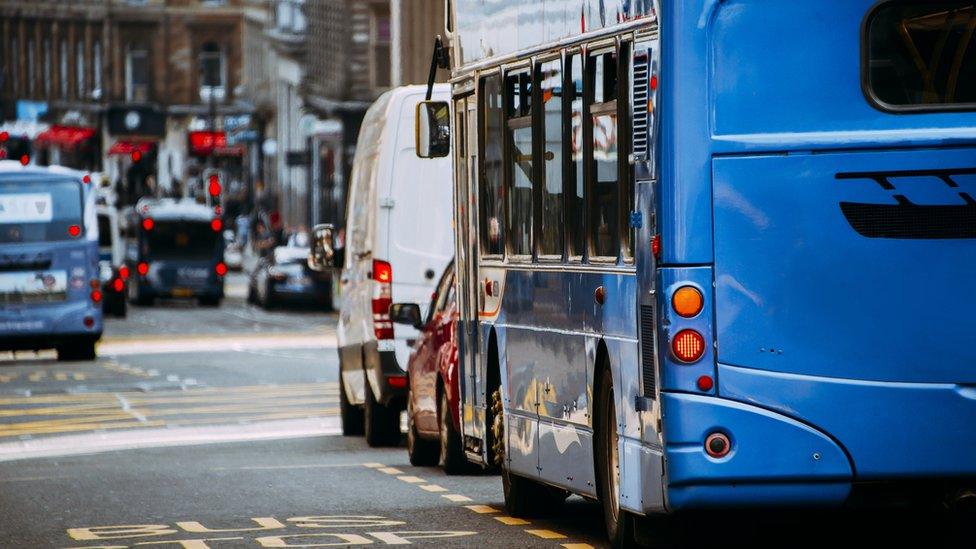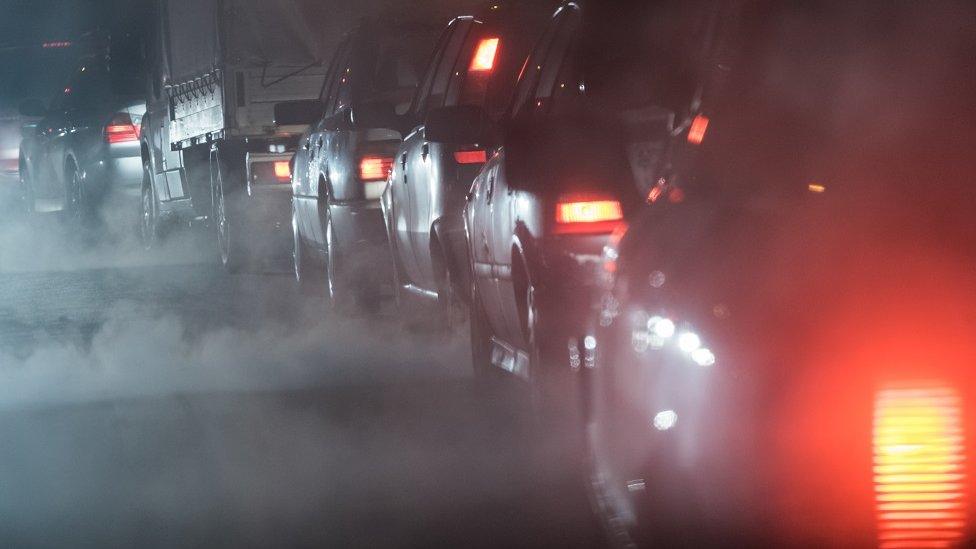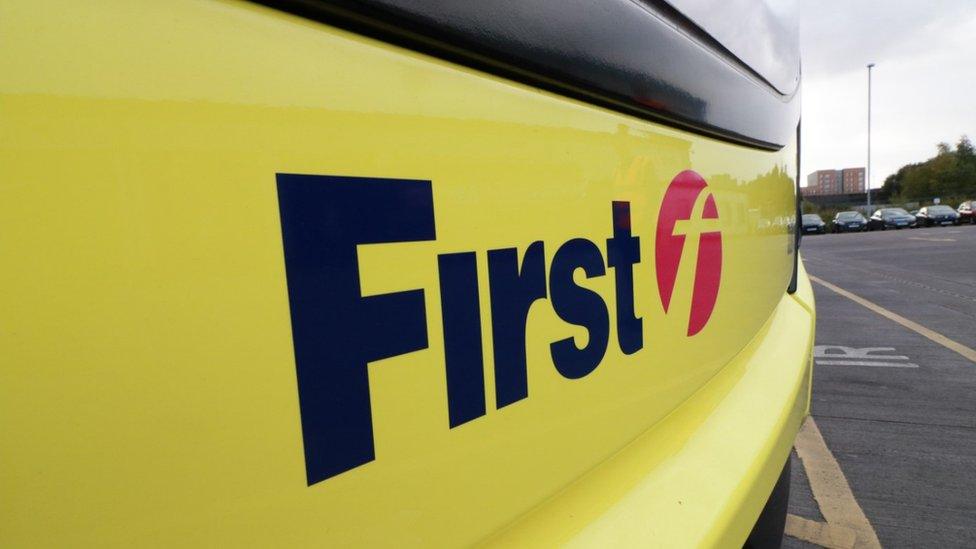Scotland's first low-emission zone launched in Glasgow
- Published

Local bus services in Glasgow must comply with European emissions standards.
Scotland's first low-emission zone (LEZ) is being introduced in Glasgow.
The first phase of the LEZ will set emission standards which must be met by 20% of buses which pass through the city centre. It means local bus services must comply with European emissions standards.
Phase two, applying to all vehicles entering the zone, is to be implemented in December 2022.
Campaigners have said the zone will not achieve significant change.
The scheme will be enforced through the use of Automatic Number Plate Recognition (ANPR) cameras.
Air pollution campaigners say the plan to phase out the dirtiest buses in the city centre over a five-year period will bring almost no change in the first year, and they have criticised the decision not to impose restrictions on all other vehicles until 2022.
Campaigner Gavin Thomson said: "The toxic, illegal levels of air pollution in Glasgow causes hundreds of premature deaths and life-limiting conditions.
"Unfortunately, the weak terms of this low-emission zone - only applying to one in five buses - won't achieve any significant change for air quality.
"This 'no ambition zone' means fumes from transport in the centre of Glasgow will carry on poisoning people's lungs for many more years."
He added: "Around 18% of buses in Glasgow already met the emission standards before the zone was decided, so there will be very little change in the fleet.
'Pragmatic approach'
Councils in Edinburgh, Dundee and Aberdeen have discussed bringing in LEZs.
Mr Thomson said they must be bold in their approach to tackling pollution.
"With Edinburgh, Dundee and Aberdeen all planning their low-emission zones for 2020, there is an opportunity for cities to set a path to clean air, compel bus companies to clean up their fleet, and remove the worst polluting vehicles from city centres," he said.

A Glasgow City Council spokeswoman said the council's approach was a "manageable, yet robust" way to reduce pollution.
"Glasgow's LEZ is modelled as being capable of making significant reductions in levels of air pollution in the city centre. Focusing initially on local service buses, the strict emission standards required to enter the LEZ will apply to all vehicles by the end of 2022.
"This pragmatic and phased approach will ensure a manageable, yet robust timetable for implementation that looks at the city's overall needs to ensure it won't have a detrimental impact on people's lives, businesses and the vitality of the city centre."
She added: "Other cities across Europe adopted similar lead-in times for their low-emission zones, so it's seen as a reasonable amount of time to get the message out to businesses and residents so they are informed and can prepare."
'Milestone moment'
Transport Secretary Michael Matheson described the development as as a "milestone moment" and said the government was committed to introducing low emission zones into Scotland's four biggest cities by 2020.
He added: "Glasgow is the first city to implement a zone, working with the bus industry to respond to the particular air quality challenges within their city centre.
"This is incredibly important for the oldest and youngest in our society and those with existing cardiovascular or respiratory conditions - but is also relevant to all of us who wish to enjoy cleaner air and less polluting emissions.
"We will continue to support local authorities and the bus industry in delivering transformative steps to improve the quality of our air in places that we live, work and visit."
- Published9 October 2018

- Published16 March 2018

- Published28 February 2018
